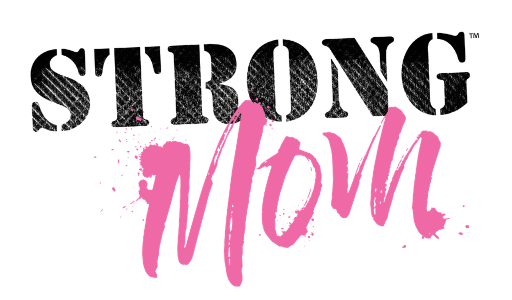I remember when I was younger, I was just like my mom; spraying perfume on my neck, wrists, (and maybe the underside of my knees if I was going somewhere super special.) It was normal for us ladies to both reek up the car with our synthetic soup of toxic chemical smells. Oh my poor dad and brother!!
In my young years I didn’t think anything of it really until later on in my twenties when the smells started to get to me and make me headachy. So I stopped using them. Then I started learning about all of the terrible chemicals that perfume is made of, and have since sworn them off for good.
Having had a new baby born just two weeks ago, the fragrance topic has come up again. Although we don’t use any products in our house that have fragrance, having a newborn brings many visitors, and many different people with different scents, colognes and smells into our home. Holding a baby so close to your chest and neck; the #1 spot where people spray their fragrance makes me cringe, and wonder what my little innocent newborn is breathing into his lungs, thus the reason for this post.
As a woman who used to wear perfume, I know it’s hard to quit, until you find out what these fragrances are made of, and how they can affect you and your health.
I know it’s hard to quit, until you find out what these fragrances are made of, and how they can affect you and your health.
Perfumes, eau de toilet, shampoos, body lotions and other personal products which contain the vague words ‘fragrance’ or ‘parfum’ in their ingredient list leaves the consumer to guess what the toxic brew contains.
Here are some of the ingredients most likely contained in any product containing either ‘fragrance’ or ‘parfum’:
Phthalates – are used to make fragrances last longer and are hormone disruptors – meaning they interfere with our hormone systems and can cause cancerous tumors, birth defects, and other developmental disorders in the body. Phthalates have been banned in children’s toys in USA, Europe and Canada, however no one has stopped the fragrance industry from using this plasticizer in scents.
Styrene- the stuff used to make polystyrene- you know the foam cups and foam take out containers. The National Toxicology Program found that styrene is “reasonably anticipated to be a human carcinogen” – another cancer causer.
Parabens: this estrogen mimicking preservative has been found in breast cancer tissues, and has also been found to interfere with male reproductive functions.
Synthetic Musks: have been linked to hormone disruption and are thought to persist and accumulate in breast milk, body fat, and umbilical cord blood, and some musks have been linked to cancer.
Yikes, and that’s just part of it. If you have asthma, watch out. The Environmental Networking Group (one of my favourite websites for up to date research on health and the environment ) states that “fragrance formulas are considered to be among the top 5 known allergens and can trigger asthma attacks.” There is also evidence that suggests exposure can make asthma worse, and may be the contributing factor to the development in children.
The EWG also found that the average fragrance tested has 14 secret chemicals not listed on the label. The group noted that:
“Among them are chemicals associated with hormone disruption and allergic reactions, and many substances that have not been assessed for safety in personal care products.
Also in the ranks of undisclosed ingredients are chemicals with troubling hazardous properties or with a propensity to accumulate in human tissues. These include diethyl phthalate, a chemical found in 97 percent of Americans and linked to sperm damage in human epidemiological studies, and musk ketone, a synthetic fragrance ingredient that concentrates in human fat tissue and breast milk.”
It gets even worse: because the FDA has not assessed the majority of these chemicals, and the fragrance industry is allowed to regulate itself, no one is investigating the safety of these ingredients. And don’t think that steering clear of personal care products will limit your exposure to toxins, think about what is used to scent your household care products like dish detergent, laundry soap, hand soap, candles, air fresheners etc. All of these products together increase your exposure to chemicals that could reasonably be carcinogenic to humans. But that’s for another day and another blog post.
the FDA has not assessed the majority of these chemicals, and the fragrance industry is allowed to regulate itself, no one is investigating the safety of these ingredients.
So how do you know which fragrances, or which products contain these harmful synthetic chemicals?
You won’t if it’s a fragrance. Thankfully other products such as lip gloss, body wash, and other scented cosmetic products must be disclosed on the label by the specific name. For these other products you can refer to the EWG’s Cosmetics Database to look up the scores for the products you currently use, or products you’re considering buying.
How you can reduce exposure to fragrance chemicals:
- Read the label and don’t buy anything that contain the word ‘fragrance’ or ‘parfum’
- Refer to the EWG’s Cosmetics Database to investigate the products you use http://www.ewg.org/skindeep/
- Use essential oils that are 100% naturally derived.
- Just go fragrance free.
The decision is yours whether you want to put you, your unborn baby, or your newborn baby’s health at risk by using harmful chemical fragrances. But like they say; Health is Wealth, so why risk it?
Drop me a line, let me know if you’ve stopped using fragrances in your home once you learned about the risks. Or are you now likely to now be more diligent about what you put on your body?
xoxoxo
Sources:
http://www.ewg.org/enviroblog/2014/08/expert-panel-confirms-fragrance-ingredient-can-cause-cancer
Vasil, A (2012) Ecoholic Body. Canada. Random House Canada Limited.
Bridges, B. “Fragrace: Emerging health and environmental concerns.” Flavour Fragr. J. 17 (2002): 361-371.
http://articles.mercola.com/sites/articles/archive/2013/11/27/toxic-perfume-chemicals.aspx
http://davidsuzuki.org/issues/health/science/toxics/fragrance-and-parfum/



